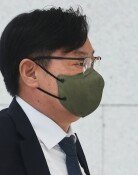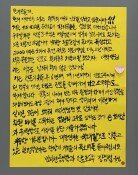NK Raised No. of Special Forces by 60,000: Report
NK Raised No. of Special Forces by 60,000: Report
Posted February. 24, 2009 04:47,
North Korea is known to have increased the number of its special forces by 60,000 and deployed a new type of medium-range ballistic missile capable of reaching northern Australia and Guam.
The Defense Ministry in Seoul yesterday released its latest assessment of its communist neighbor to the north.
The report comes amid speculation that Pyongyang is trying to overcome its military weakness posed by the joint South Korea-U.S. military drill and maximize its attack on the South in time of war.
According to the report, the North has increased its special forces by 60,000 to infiltrate the South and reinforced its light infantry battalions to regiment level.
Thus, the number of North Koreas lightly equipped special troops focused on swift infiltration to strike U.S. and South Korean forces has increased to 180,000, the report said.
The North is focusing on the war capacity of its special forces trained for night, mountain and street fighting. The move shows the North is prepared for a variety of attacks on the South based on its war operation. In case of war, North Korea apparently plans simultaneous and multi-faceted attacks after infiltrating the South using underground tunnels, it said.
A ministry source said, "After examining the wars in Iraq and Afghanistan, North Korea appears to have developed new strategies to complement its shortfalls while reinforcing its strengths."
The Norths aim appears to blur the line between friend and foe once a conflict erupts and nullify the advanced warfare capacity of the joint Korea-U.S. forces by engaging in guerrilla warfare.
The North in 2007 also completed the deployment of brand-new ballistic missiles with a range of 3,000 kilometers. The missile is believed to be modeled after the Soviet-era SS-N-6, a submarine-launched ballistic missile, and is capable of reaching Guam and much of Russia and India.
Pyongyang has developed and test fired surface-to-surface and ship-to-ship missiles capable of reaching 160 kilometers in the Yellow Sea.
The North is also said to have drastically reinforced its conventional military weapons.
The number of tanks is estimated to have risen to 3,900 units, up from 3,700 in 2006, that of multi-stage rockets to 5,100 units from 4,800, and that of guided missiles to 100 from 80 over the same period.
Twenty fighter jets were added to raise the number to 840, 40 percent of which have been deployed to warfront areas such as Pyongyang and Wonsan.
The North Korean navy has also retrofitted a new warship and 10 submarines, along with developing new types of surface-to-ship and sea-to-surface missiles and torpedoes.
The North has also completed the integration of its naval command through an advanced electronic network, the report said, while strengthening its capabilities in cyber warfare.
On the Norths nuclear capacity, the biennial policy report said the North has secured about 40 kilograms of plutonium and conducted a nuclear test in Oct. 2006.
The report is said to have omitted the assumption that Pyongyang manufactured one or two nuclear weapons to avoid the controversy of recognizing the North as a nuclear power.
ysh1005@donga.com
Headline News
- Med professors announce intention to leave hospitals starting Thursday
- Bridge honoring Sgt. Moon Jae-sik unveiled in Pennsylvania
- Chief of Staff Chung tells presidential secretaries to stay away from politics
- US FTC bans noncompete agreements
- N. Korea launches cyberattacks on S. Korea's defense companies







